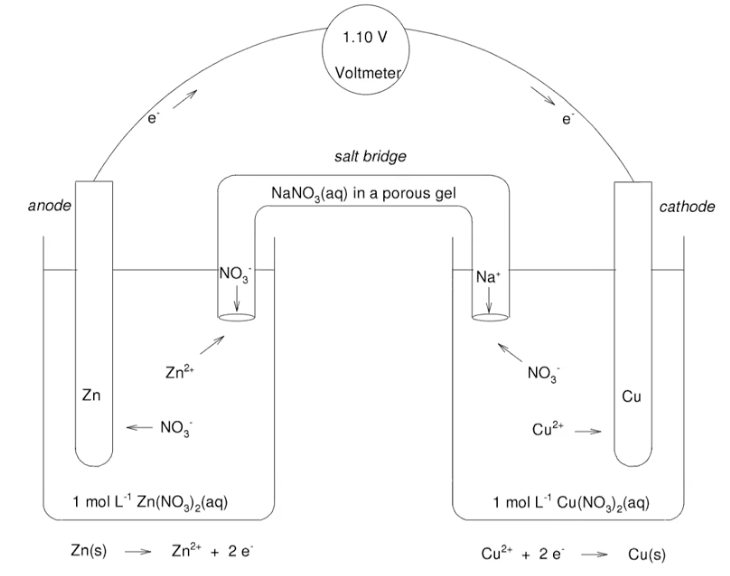11.Electrochemistry
Oxidation (losses electrons) occurs at the anode (on the left) (lower E_{red}^\circ)
Reduction (gain electrons) occurs at the cathode (on the right) (higher E_{red}^\circ)
Cell diagram for the following cell:  , sometimes the cell diafgram is written with spectator ions left out, for example:
, sometimes the cell diafgram is written with spectator ions left out, for example: 

In cell diagram , platinum is served as an inactive electrode
, platinum is served as an inactive electrode
The cell is spontanous when E_{cell}^\circ > 0
| Name | Symbol | Unit |
|---|---|---|
| Standard cell potential | E_{cell}^\circ | V |
| Oxidation half-cell potential | E_{ox}^\circ | V |
| Reduction half-cell potential | E_{red}^\circ | V |
| Faraday constant | F=96485\frac{C}{mol} | \frac{C}{mol} |
| Equation | Explain |
|---|---|
| E=V\times C | Energy = volt x coulomb |
| -nFE_{cell}=\Delta G | n: number of electrons transfered in the cell reaction |
| -\Delta G | maximum electrical that can be done by an electrochemical cell for 1 mol of reaction |
| E_{ox}^\circ=-E_{red}^\circ | |
| E_{cell}^\circ=E_{red}^\circ(cathode)-E_{red}^\circ(anode) | |
| E_{cell}^\circ=\frac{RT}{nF}\ln K | |
| E_{cell}=E_{cell}^\circ-\frac{RT}{nF}\ln Q | Calculate E_{cell} under non-standard condition |
 this cell has a positive cell potential if the concentration is higher at the cathode. Q=\frac{[Cu^{2+},anode]}{[Cu^{2-},cathode]}
this cell has a positive cell potential if the concentration is higher at the cathode. Q=\frac{[Cu^{2+},anode]}{[Cu^{2-},cathode]}
Last update:
December 15, 2021
Created: December 6, 2021
Created: December 6, 2021